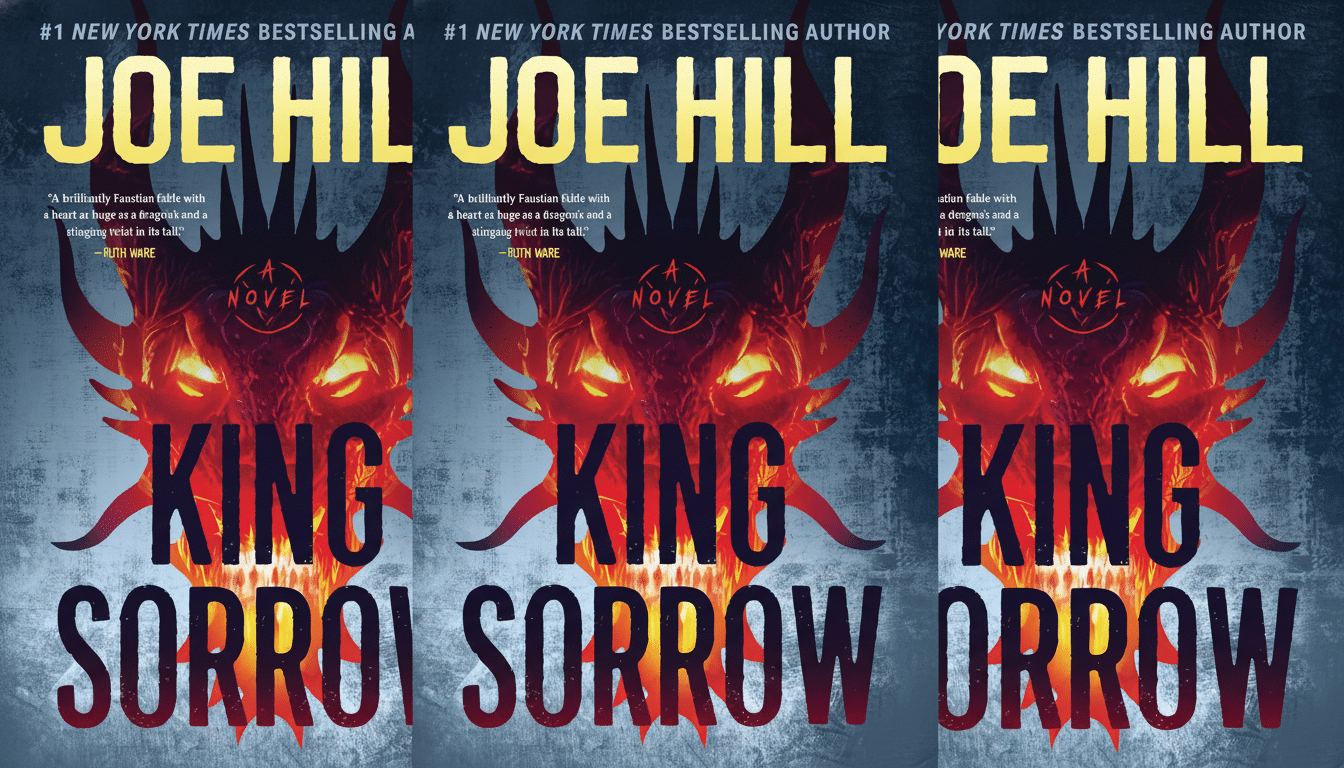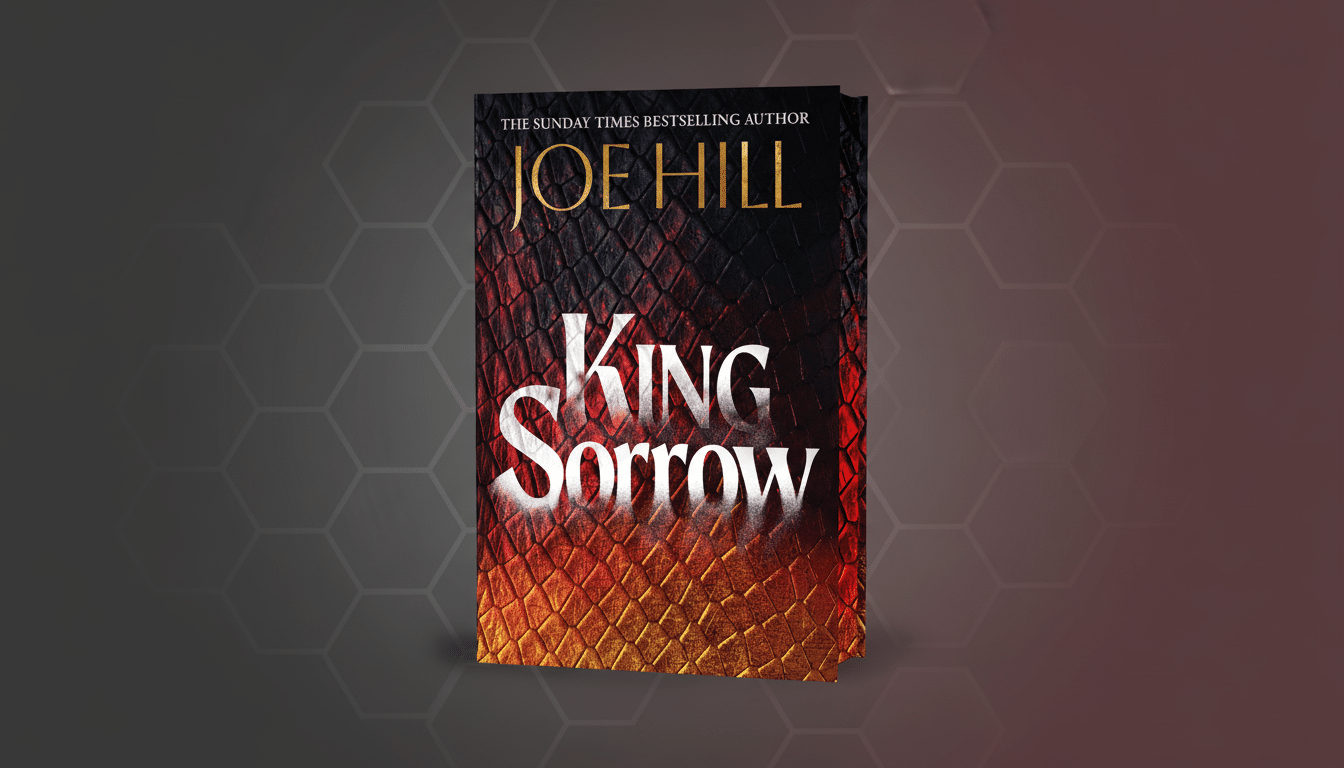Joe Hill isn’t just tipping his hat to Stephen King in King Sorrow — he’s constructing story machinery out of those nods. In recent interviews about the novel, Hill walked me through how several references to his father’s classics function as more than Easter eggs, influencing character dynamics, tone and theme throughout the most pivotal scenes of the book.
It’s a marked pivot for a writer who began his career by writing under a pen name, partly to evade the expectations surrounding its debut. Now a New York Times bestseller in his own right, Hill has never shown any squeamishness or reluctance about taking up the King canon as both inheritance and toolkit: that was apparent well before publication, when he appeared to be doing anything but running away from his father’s work (as manifested in adaptations of stories collected in “Full Throttle”).

Why the References Matter in Joe Hill’s King Sorrow
Hill frames the references as narrative shortcuts, tools that allow him to outline a broad American cross-section, plant dread and signal mythic scale. A degree of intertextuality is typical in modern horror: when readers hear a familiar name or cadence, it carries with it a great load of associations without the author having to waste pages upon them. Given that King’s novels are believed to have sold more than 400 million copies worldwide and continue to be library and classroom staples, those associations are unusually powerful. Market analysts at Circana have also observed increasing growth in the horror category during the last few years, further underscoring how valuable it can be to have that shared vocabulary of genre.
‘The Dead Zone’ as Political Compass in King Sorrow
At one point in King Sorrow, a group of six friends discuss Johnny Smith and Greg Stillson from The Dead Zone. Hill uses the interchange to position each character on the political spectrum, in a page or two, just as a stage director blocks a scene and you can immediately see who stands where. Stillson—a hot-headed populist often read by pundits as an analogy for real figures—stands as a litmus test, and how everyone reacts to that name makes explicit their approach to life and outlines the group dynamics that will propel the plot. It’s a canny case of reference, yet not a flourish.
Echoes of ‘The Dark Tower’ Shape the Novel’s Tone
Arthur Oakes chases a shadow-form across the snow when the friends try their first summoning of the title dragon. Hill’s verbiage deliberately echoes the rolling cadence of The Dark Tower’s legendary opener, borrowing its heartbeat to proclaim that we have crossed over into myth. The effect is as much musical as textual: readers need not parse the echo directly, but the rhythm telegraphs grandeur and inevitability—qualities that fans of “The Dark Tower” will recognize instantly. It’s an homage as meter, repurposed to modulate the novel’s register from intimate to epic in a single beat.
A Silent Homage to ‘Pet Sematary’ and Its Foreboding
Stuart Finger, a troll—groveling his entire time on stage—takes two into a cave later. The advice he tenderly dispenses has the same warning heat as Jud Crandall’s when he cautions Louis Creed on a line he can’t walk back in “Pet Sematary.” Hill relies on phrasing and tone more than direct quotation to convey whatever this something is, a low, thrumming inevitability—an “it’s too late to turn back now” subtext that horror fans in the know will pick up on. The callback functions like a pressure drop within the narrative: even if readers miss the allusion, they feel the air thin out about them.

Intertextuality as Inheritance in Hill’s Horror Toolkit
Hill has argued that horror writers of his generation came up in a world that King shaped, and King Sorrow regards that fact as an asset to its storytelling. With a nod to The Dead Zone he’s able to map social fault lines; with an echo of The Dark Tower, mythic music thunders through; by conjuring Pet Sematary, dread’s thermostat is turned up. The strategy is also part of a deeper literary tradition in which stories speak to one another across the decades (see contemporary Gothic tracing its antecedents through shows like “Castle Rock” back to Shirley Jackson or cosmic horror updating Lovecraft’s fears for new audiences).
There’s also a personal dimension. Hill’s acknowledgments and collaborations (two coauthored tales with King in Full Throttle) reveal a writer willing to engage with the canon closest to home. The nods in King Sorrow are more bridges than winks, constructed to bear the weight of character, theme and history.
For readers, that translates into two complementary pleasures. And if you read it straight, you get a tightly wound horror yarn about friendship, obsession and a dragon that might be more than just a monster. Or you can adjust your ear to the signal below the plot and hear the conversation Hill is having with one of the planet’s best storytellers still around—a conversation that supplies reverberation while never transforming the book into a scavenger hunt.
King Sorrow is now in stores, and the references are no gimmick. They’re the scaffolding of a story that is all too aware of where its shadows come from—and how to make those shadows dance.

